- News
- Reviews
- Bikes
- Accessories
- Accessories - misc
- Computer mounts
- Bags
- Bar ends
- Bike bags & cases
- Bottle cages
- Bottles
- Cameras
- Car racks
- Child seats
- Computers
- Glasses
- GPS units
- Helmets
- Lights - front
- Lights - rear
- Lights - sets
- Locks
- Mirrors
- Mudguards
- Racks
- Pumps & CO2 inflators
- Puncture kits
- Reflectives
- Smart watches
- Stands and racks
- Trailers
- Clothing
- Components
- Bar tape & grips
- Bottom brackets
- Brake & gear cables
- Brake & STI levers
- Brake pads & spares
- Brakes
- Cassettes & freewheels
- Chains
- Chainsets & chainrings
- Derailleurs - front
- Derailleurs - rear
- Forks
- Gear levers & shifters
- Groupsets
- Handlebars & extensions
- Headsets
- Hubs
- Inner tubes
- Pedals
- Quick releases & skewers
- Saddles
- Seatposts
- Stems
- Wheels
- Tyres
- Health, fitness and nutrition
- Tools and workshop
- Miscellaneous
- Cross country mountain bikes
- Tubeless valves
- Buyers Guides
- Features
- Forum
- Recommends
- Podcast
review
 Orro Gold STC Force D2 Etap AXS Tailormade
Orro Gold STC Force D2 Etap AXS Tailormade£5,499.99
VERDICT:
A wonderful blend of comfort and performance, at an awesome price for a build of this quality
Excellent balance of performance and comfort
Great value
Very responsive
Well specced throughout
Weight:
7,690g
Contact:

This product has been selected to feature in road.cc recommends. That means it's not just scored well, but we think it stands out as special. Go to road.cc recommends
At road.cc every product is thoroughly tested for as long as it takes to get a proper insight into how well it works. Our reviewers are experienced cyclists that we trust to be objective. While we strive to ensure that opinions expressed are backed up by facts, reviews are by their nature an informed opinion, not a definitive verdict. We don't intentionally try to break anything (except locks) but we do try to look for weak points in any design. The overall score is not just an average of the other scores: it reflects both a product's function and value – with value determined by how a product compares with items of similar spec, quality, and price.
What the road.cc scores meanGood scores are more common than bad, because fortunately good products are more common than bad.
- Exceptional
- Excellent
- Very Good
- Good
- Quite good
- Average
- Not so good
- Poor
- Bad
- Appalling
The latest Orro Gold STC still focuses on comfort, but with some wind-cheating updates over its predecessor it has now joined the ranks as one of the best all-round do-it-all, aero-cum-endurance bike you can buy. With a stunning ride quality and easy-to-live-with geometry this is a very fast and comfortable road bike at an impressive price.
Check out our best road bikes buyer's guide for our top choices, and our best road bikes under £2,000 for more budget-minded purchases.
Ride
The first thing that hits you as you start riding the Gold STC is its stunning ride quality. It just feels sublime, something that is impressive considering how light and stiff the bike is overall.
It has a very solid feel. That planted, confidence-inspiring feedback you often get from heavier bikes that you might use for touring or winter training. There is no rattly, hollow-sounding ride, plus buzz and vibration are well dampened, which makes the Orro a lovely bike to ride even on poor road surfaces.
That's the underlying sensation at least, the baseline feeling if you like. What you have layered over the top of that is a lightweight (7.7kg) road bike with well-balanced handling and hugely responsive handling.
The seat angle puts you in quite a forward aggressive ride style, while the front end is backed off a touch, giving steering that is quick enough for all the roads I encountered while staying well away from the twitchy handling arena that you can find on full-on race bikes.
On my downhill testing route with its off-camber chicane, and a mixture of fast flowing and tight, yet high-speed corners it proved itself to be very sure-footed, paired to feedback levels that give you excellent communication about what the tyres are up to with pinpoint accuracy.
On this medium model the wheelbase is well short of a metre, which gives the Gold a nimble feeling and it changes direction with the slightest of inputs from you, which certainly adds to the fun factor when you want to ride it hard, when you're sprinting or attacking climbs.
The stiffness comes into play here too. This is a very tight bike with the oversized press-fit bottom bracket area coping with huge pedalling efforts, and those chunky chainstays make sure that the power gets through to the rear wheel.
With its 'aero-ish' frameset, cockpit and deep-section wheels it's an efficient-feeling bike too.
For when things are a little less frantic, though, the Gold's comfort and refinement shine through. The ride is smooth, thanks to things like the very slender seatstays and wide tyre clearance on offer, but also the way that the geometry works.
It's an easy bike to get a very comfortable position on, with a decent drop achievable between the saddle and handlebar without being overly extreme.
Overall, from a ride point of view I really can't find anything negative. The Gold STC strikes an awesome balance of stiffness, comfort and smoothness, while the geometry is a near perfect balance of performance and being easy to live with.
Frame & Fork
Orro launched with the Gold model around 10 years ago (we last reviewed one back in 2016) and just as with that original version this Gold is created from the company's own moulds that are designed completely in house.
Like that early model this version also uses 'spread tow carbon', hence the STC in its name. It's made by the Runcorn-based company Sigmatex.
'The sigmaST range of spread tow fabrics are very thin, are ultra-lightweight, have near zero crimp and fewer interlacing points,' says Sigmatex. 'As well as being aesthetically pleasing, this technology has improved mechanical performance at a reduced thickness and cost when compared to standard 2D fabrics using 1K fibres.'
The carbon fibre is arranged in flat and wide tapes that are woven together, a method used to reduce weight and increase stiffness. This equates to a frame weight of just 830g including all alloy parts, which is impressive.
Alongside the STC, the Gold is also constructed from Toray T1000, T800 and T700 carbon fibre grades.
The Gold has always been designed as a bike to get big miles in on, comfortably and quickly, and it's that latter point that has probably seen the biggest changes with this new version. Compared to the previous design this one takes many styling cues from the Venturi, Orro's wind-cheating aero bike.
The Gold now has smoothed junctions between its tubes like where the top, down and head tube all run into one, dropped seatstays and a completely smooth seat cluster with an internal clamping mechanism for the post.
It's a much more purposeful-looking machine, made to look even better thanks to the full internal cable and hose routing that disappears into the handlebar and isn't seen again until the cable and hoses pop out where they are required. Orro is keen to point out that the Gold is compatible with both mechanical and electronic groupsets, when a lot of new bikes at this price are being created for electronic only.
Orro has also increased the clearance, with the Gold now capable of accepting tyres up to 32mm wide.
The overall build quality is excellent. The Gold STC not only feels solid to ride, but it feels solid when you pick it up, or tap the frame tubes. Okay – not exactly what you'd call a genuine scientific test, but nothing sounds or feels plasticky, and a quick scan inside the seat tube with a light shows a smoothly finished frame. Orro says this is down to using a full EPS and latex mould during the construction process.
The Gold is available in five sizes with the XS getting a top tube length of 500mm, with the XL's top tube measuring 588mm.
We have the medium, which has a 541mm top tube and a 162mm head tube, equating to stack and reach figures of 570mm and 377mm respectively.
The wheelbase is relatively short at 992mm, which gives the Orro its nimbleness, and as for angles you're looking at 74° for the seat tube and 72.2° for the head tube.
Finishing Kit
SRAM recently updated its second-tier Force AXS groupset and it's this version that the Gold is wearing, with its cool black/Unicorn-grey finish laser foil detailing.
SRAM's electronic AXS groupsets work with a single button hidden behind the paddle on each shifter, with the right-hand button moving the chain down the cassette, and the left pulling it back up. Push both together and you switch from the chainring you're using to the other. It's intuitive to use, simple and I really like it.
SRAM also specs its gear ratios slightly differently than Shimano, going with much smaller 45/38T chainrings than the 50/34 that is the smallest pairing on Shimano's road chainsets. SRAM pairs this with a 10-33T 12-speed cassette.
The 10-tooth cog still gives you a high gear for descending or hard efforts when paired with the largest chainring, and a 38/33T lowest gear is great for climbing.
The trade-off is that you have slightly bigger jumps on the cassette, which can affect you if you have a narrow cadence range style, but as it is mostly the larger sprockets used for climbing it's not really an issue most of the time.
Other than that, it's a great groupset and one that really suits the Gold's performance intentions.
The braking is also top notch and with the 160mm (F) and 140mm (R) setup there is more than enough power on offer.
Unlike a lot of other bikes at this price the Gold STC doesn't use an integrated cockpit, Orro opting instead for a separate handlebar and stem, which brings a bit more versatility and adjustability.
The carbon Vision Metron handlebar has a great shape, rising either side of the stem to give a bit more height even if you want to slam the stem, and the wing-profile tops are comfortable.
It also starts off the internal cable routing for the clean-looking front end.
The Vision SMR Alloy stem accepts those cables – or hydraulic hoses in this case – from the bar and directs them into the head tube.
The carbon seatpost is designed specifically to work with the Gold's frame and is topped with a Selle San Marco Shortfit saddle, one that we have reviewed in many guises.
Its shorty shape works well with the Orro's riding position, which allows you to get into a crouched position comfortable should the need arise, while its ample padding lets you sit more upright when you are tapping out the miles.
Vision also supplies the wheels in the form of the SC 40s that scored very highly when we reviewed them back in 2020.
At 40mm deep the version fitted here brings a balance of speed and handling and works very well with the Gold. Their low weight means they accelerate well and don't hinder the bike on the climbs.
From a durability point of view, I have nothing to complain about over what is quite a short test period, but they have rolled over pot-holed, broken surfaced road surfaces without issue.
If you want to exploit the performance available from your road bike then fitting a set of Continental's GP 5000 tyres is one of the best things you can do, and they're fitted as standard though our test bike came with Vredestein Fortezza rubber.
But I know from riding Conti's 5000s that they are excellent performers with loads of grip, low rolling resistance and a great feel. For such a performance-orientated tyre they are also pretty robust against punctures and are generally fairly durable.
Pricing & Competition
We have reviewed many of Orro's bikes of the years, and one thing they have all had in common is excellent value for money. This is true from the entry-level aluminium Terra X gravel bike to the top-flight Venturi STC – of which there is a new model we'll be reviewing very soon.
The Gold STC line-up starts with the Shimano 105 Di2 build that comes with Deda finishing kit, Fulcrum R800 DB wheels and Conti's Grand Sport Race tyres, all for a very impressive £3,199.99, and tops out with this £5499.99 Force D2 AXS Tailormade model. Two Ultegra Di2 models are available starting at £3,899.99, with the Tailormade version costing £4,899.99.
If your budget doesn't quite stretch that far then the Gold is also available in an Evo version, which uses the previous geometry and design for its non-STC frame and fork. A 105/FSA build with mechanical shifting, cable disc brakes and Fulcrum R800 wheels is available for £1,799.99 while the model with 12-speed 105 mechanical shifters and hydraulic brakes costs £2,199.99.
We have seen a lot of endurance bikes released lately that focus on aerodynamics and comfort to create all-round road race bikes, and when it comes to pricing the Gold is looking to be very competitive indeed.
The Ridley Falcn RS may have slightly larger tyre clearance on offer, albeit by a mere 2mm, but weight, finishing kit and performance are very similar indeed – and I thought it was a cracking performer. But fitted with SRAM Force AXS and deep- section carbon wheels the Ridley is vastly more expesive at £8,199 and just 200g lighter than the Gold.
The Pinarello X3 that I recently reviewed was £4,500 equipped with 105 Di2, and Fulcrum R800 wheels – the Gold in pretty much the same build costs just £3,199.99.
Merida also scores highly when it comes to performance versus cost on the bikes we have reviewed, but Orro even has Merida beaten here too. The Scultura Endurance range tops out with the 9000 that comes with Ultegra Di2 and deep-section Reynolds wheels for £5,200.
The Merida goes a little bit further than the Gold in terms of its 'endurance' nature, with bigger tyre clearance and the ability to take mudguards. It's still a performance road bike, though, as I found out when reviewing the 4000 model 4000 model.
Conclusion
When it comes to the value the Gold STC is very impressive, but Orro hasn't cut any corners to bring a cheap bike to market. Orro has backed it up with a high-quality frameset, both in terms of the finish and the ride quality. The Gold STC is the complete package for all kinds of road riding.
Verdict
A wonderful blend of comfort and performance, at an awesome price for a build of this quality
road.cc test report
Make and model: Orro 2024 Gold STC Force D2 Etap AXS Tailormade
Size tested: Medium
About the bike
List the components used to build up the bike.
Fork: ORRO Gold STC Superlight 2.0
Frame: ORRO Gold STC Disc
Seatpost: Orro Carbon Seatpost
Bottom Bracket: DUB PF 86.5
Front Derailleur: Sram Force eTap AXS
Tyres: Continental GP5000
Saddle: San Marco Shortfit Racing
Stem: Vision SMR Alloy
Cassette: SRAM Force 10-33
Shifters: SRAM Force eTap AXS
Rear Derailleur: SRAM Force eTap AXS
Brake Calipers: SRAM Force AXS
Handlebar: Vision Metron 4D
Chainset: SRAM Force 35/48
Wheelset: Vision SC40 Carbon
Tell us what the bike is for and who it's aimed at. What do the manufacturers say about it? How does that compare to your own feelings about the bike?
Orro says: "Introducing the All-new Gold STC, a high-performance road bike that prioritizes both speed and comfort. Designed with meticulous attention to detail, this bike is crafted to enhance your riding experience."
The Gold STC is a very comfortable bike with geometry that suits both performance riding whether over long or short distances.
Where does this model sit in the range? Tell us briefly about the cheaper options and the more expensive options
The Gold STC range is available in four builds, with this one sitting at the top. Bikes start from £3,199.99 for 105 Di2.
Frame and fork
Overall rating for frame and fork
9/10
Tell us about the build quality and finish of the frame and fork?
Excellent build quality throughout and the matt black paint looks classy and is hardwearing.
Tell us about the materials used in the frame and fork?
It's a carbon fibre frameset constructed from Sigma STC and Toray T1000, T800 & T700 grades of carbon fibre.
Tell us about the geometry of the frame and fork?
It's a blend of performance and endurance road bike.
How was the bike in terms of height and reach? How did it compare to other bikes of the same stated size?
The stack and reach figures have a ratio of 1.53 in this medium size, which is fairly typical for a bike of this style and in this size.
Riding the bike
Was the bike comfortable to ride? Tell us how you felt about the ride quality.
Yes. The ride quality is excellent with the stiff frame managing to reduce road buzz and vibration to a certain degree.
Did the bike feel stiff in the right places? Did any part of the bike feel too stiff or too flexible?
This feels like a very stiff bike, which makes it a lot of fun on the climbs and when accelerating hard.
How did the bike transfer power? Did it feel efficient?
With a very tight lower half of the frame there are no feelings of inefficiency when you are putting a lot of power through the pedals.
Was there any toe-clip overlap with the front wheel? If so was it a problem?
No
How would you describe the steering? Was it lively neutral or unresponsive? On the quick side of neutral.
Tell us some more about the handling. How did the bike feel overall? Did it do particular things well or badly?
The Gold feels very balanced from a steering point of view with enough speed to cope with fast downhills, but it never feels twitchy or dificult to live with at a more sedate pace.
Which components had the most effect (good or bad) on the bike's comfort? would you recommend any changes?
The Orro is well specced with a comfortable saddle and handlebar.
Which components had the most effect (good or bad) on the bike's stiffness? would you recommend any changes?
The Vision wheels are stiff, which helps out-of-the-saddle efforts.
Which components had the most effect (good or bad) on the bike's efficiency? would you recommend any changes?
The ratios of the Force groupset work very well indeed, and I find the smaller chainrings very efficient.
Rate the bike for efficiency of power transfer:
8/10
Rate the bike for acceleration:
9/10
Rate the bike for sprinting:
9/10
Rate the bike for high speed stability:
9/10
Rate the bike for cruising speed stability:
9/10
Rate the bike for low speed stability:
8/10
Rate the bike for flat cornering:
8/10
Rate the bike for cornering on descents:
9/10
Rate the bike for climbing:
8/10
The drivetrain
Rate the drivetrain for performance:
9/10
Rate the drivetrain for durability:
8/10
Rate the drivetrain for weight:
8/10
Rate the drivetrain for value:
6/10
Tell us some more about the drivetrain. Anything you particularly did or didn't like? Any components which didn't work well together?
A stunning groupset in terms of the ratios and the gear shifting quality. Also the braking power and modulation is top notch.
Wheels and tyres
Rate the wheels for performance:
8/10
Rate the wheels for durability:
8/10
Rate the wheels for weight:
8/10
Rate the wheels for comfort:
7/10
Tell us some more about the wheels.Did they work well in the conditions you encountered? Would you change the wheels? If so what for?
A great 'all-rounder' set of wheels with enough depth for an aero boost, while still being light enough to climb well.
Rate the tyres for performance:
9/10
Rate the tyres for durability:
8/10
Rate the tyres for weight:
8/10
Rate the tyres for comfort:
8/10
Tell us some more about the tyres. Did they work well in the conditions you encountered? Would you change the tyres? If so what for?
One of the best tyres out there for performance riding and suits the Orro's ride style well. Suprisingly durable for such a high peroformance tyre too.
Controls
Rate the controls for performance:
8/10
Rate the controls for durability:
8/10
Rate the controls for weight:
8/10
Rate the controls for comfort:
8/10
Tell us some more about the controls. Any particularly good or bad components? How would the controls work for larger or smaller riders?
A great spec list for the money, and all of the kit works well from an aesthetics, comfort and versatility side of things.
Your summary
Did you enjoy riding the bike? Yes
Would you consider buying the bike? Yes
Would you recommend the bike to a friend? Yes
How does the price compare to that of similar bikes in the market, including ones recently tested on road.cc?
The Orro offers much better value for money compared to the Ridley, Pinarello and Merida bikes mentioned in the review by a considerable amount.
Rate the bike overall for performance:
9/10
Rate the bike overall for value:
7/10
Use this box to explain your overall score
I really can't find anything to fault when it comes to the Gold STC. It has a stunning ride quality, balances comfort with performance and when you consider the build the price is very impressive indeed.
About the tester
Age: 44
I usually ride: This month's test bike My best bike is: B'Twin Ultra CF draped in the latest bling test components
I've been riding for: Over 20 years I ride: Every day I would class myself as: Expert
I regularly do the following types of riding: time trialling, commuting, club rides, sportives, fixed/singlespeed,
Since writing his first bike review for road.cc back in early 2009 senior product reviewer Stu has tested more than a thousand pieces of kit, and hundreds of bikes.
With an HND in mechanical engineering and previous roles as a CNC programmer/machinist, draughtsman and development engineer (working in new product design) Stu understands what it takes to bring a product to market. A mix of that knowledge combined with his love of road and gravel cycling puts him in the ideal position to put the latest kit through its paces.
He first made the switch to road cycling in 1999, primarily for fitness, but it didn’t take long for his competitive side to take over which led to around ten years as a time triallist and some pretty decent results. These days though riding is more about escapism, keeping the weight off and just enjoying the fact that he gets to ride the latest technology as part of his day job.
Latest Comments
- RoubaixCube 2 sec ago
I dont know what Conti were thinking with that price. But I can often find GP5000's for the same price or as low as £43 for the TR versions
- brooksby 4 hours 48 min ago
My wife's "pootle around the village " bike is an old Raleigh with rod brakes. They are NOT fun to play with.
- brooksby 4 hours 50 min ago
Or even better: make driving licences weight-restricted. AIUI you have to take a different test to be able to drive a minibus or a LGV or a HGV....
- NPlus1Bikelights 5 hours 29 min ago
I think buying anything off Covert Instruments would equate to going equipped over here.
- David9694 6 hours 4 min ago
Cromwell Road parking 'nightmare' next to Dorchester South...
- Doctor Fegg 7 hours 48 min ago
Ah, British Cycling and the UCI. It's hard to think of two more universally beloved organisations. Thames Water and the National Rifle Association...
- David9694 8 hours 24 min ago
Car hits stone wall and overturns in smash outside Wiltshire pub...
- wtjs 9 hours 20 min ago
We get these 'high action rate' claims all the time, with little or no evidence of what the action was. People are, of course, entitled to consider...
- Bungle_52 9 hours 34 min ago
Thank you. Can't say I've ever seen one but I will keep a lookout in future.
- chrisonabike 9 hours 35 min ago
Part of me hopes they don't waste the money. If past performance is any guide poor resurfacing (particularly around utility access points), "works...
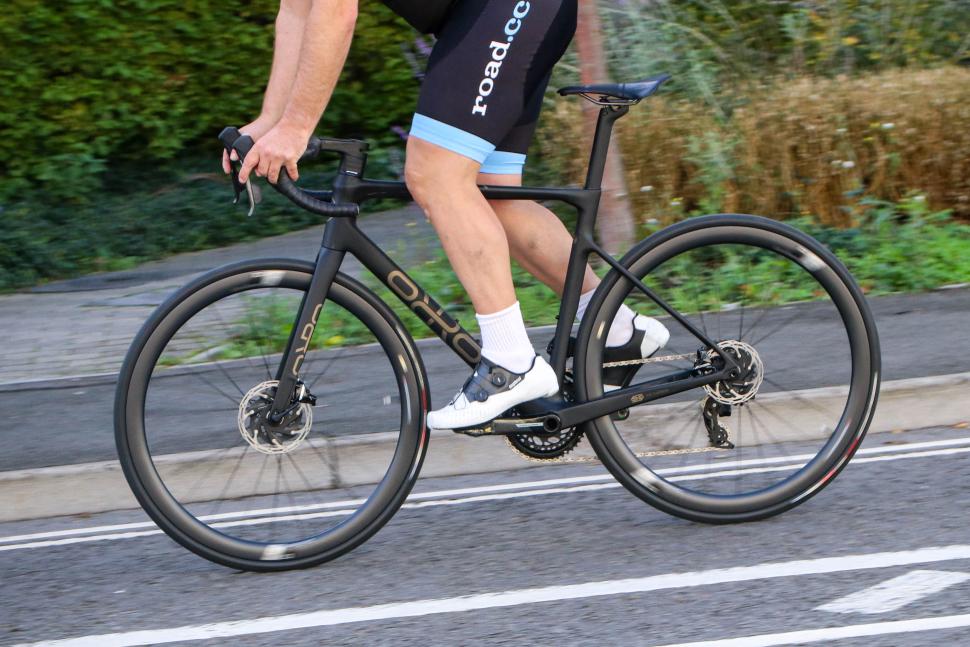








































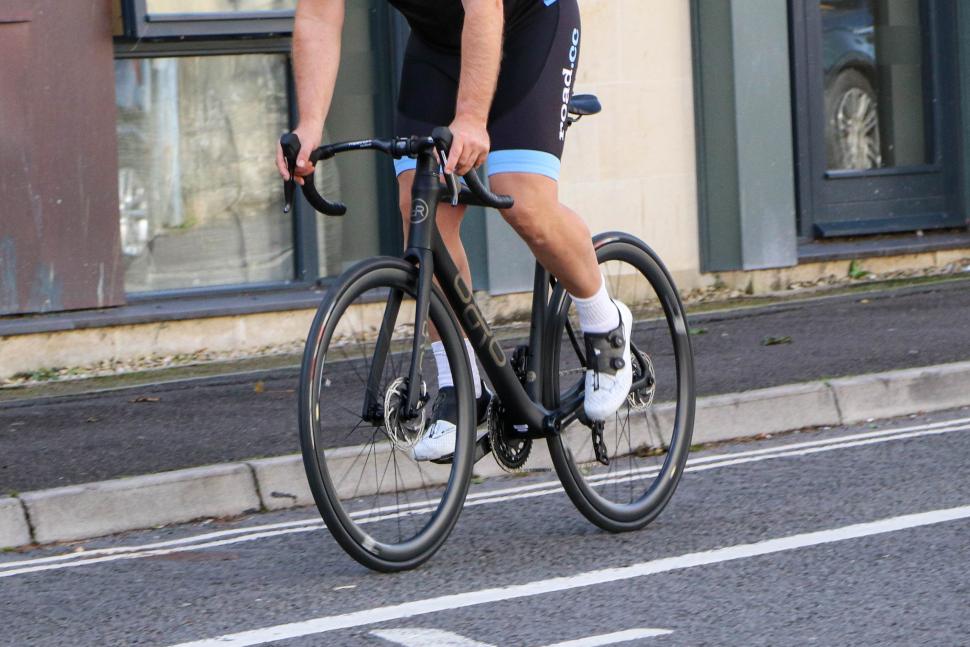
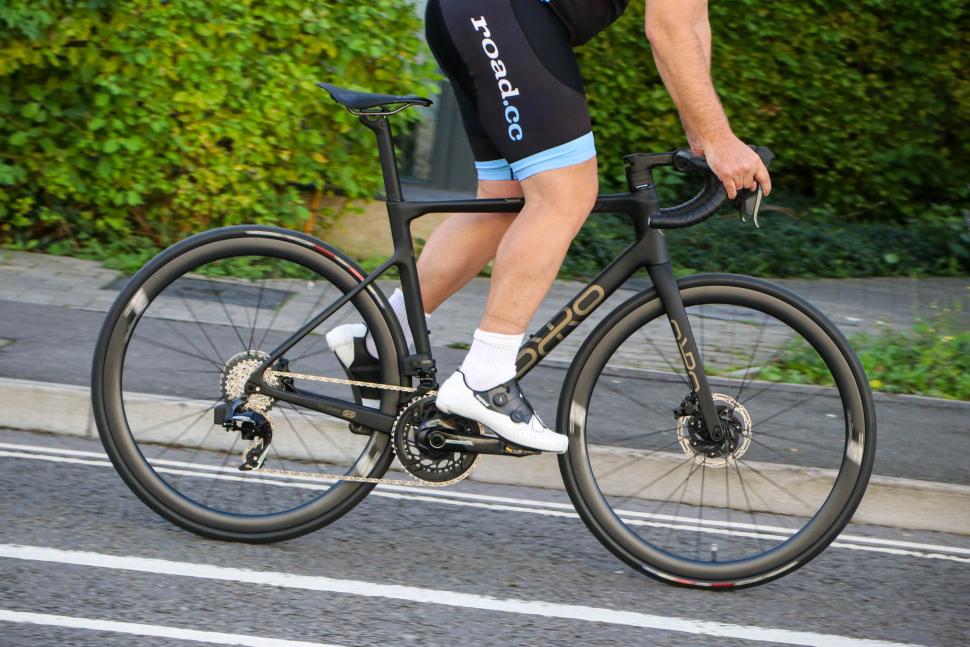
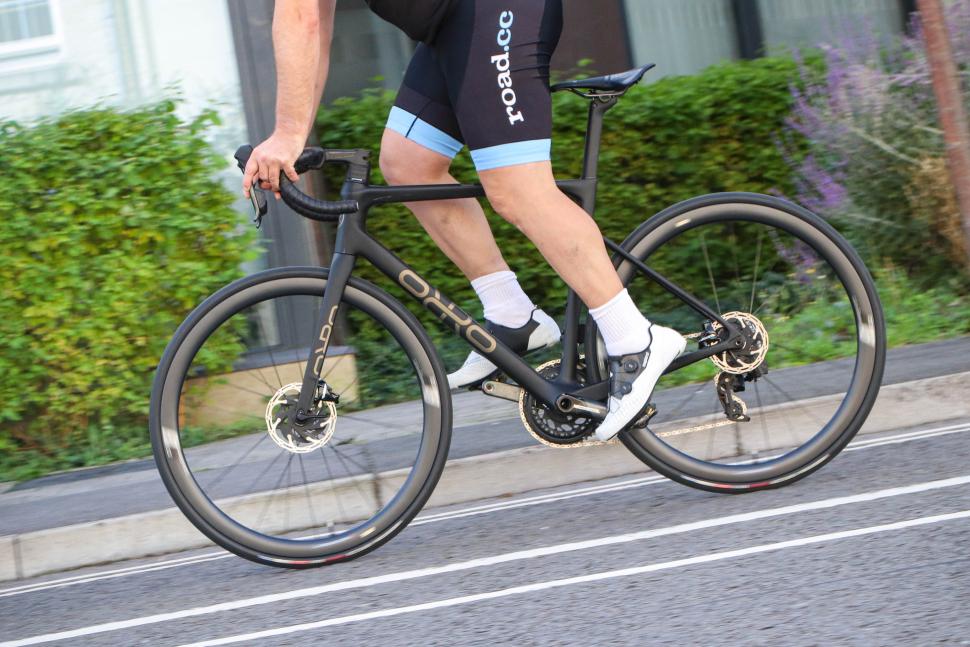

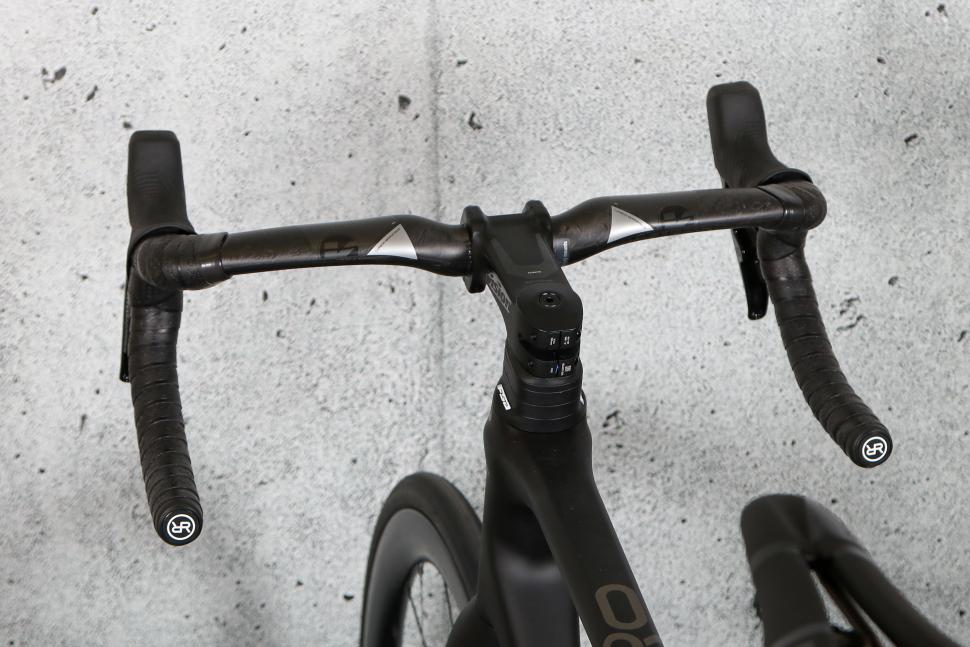
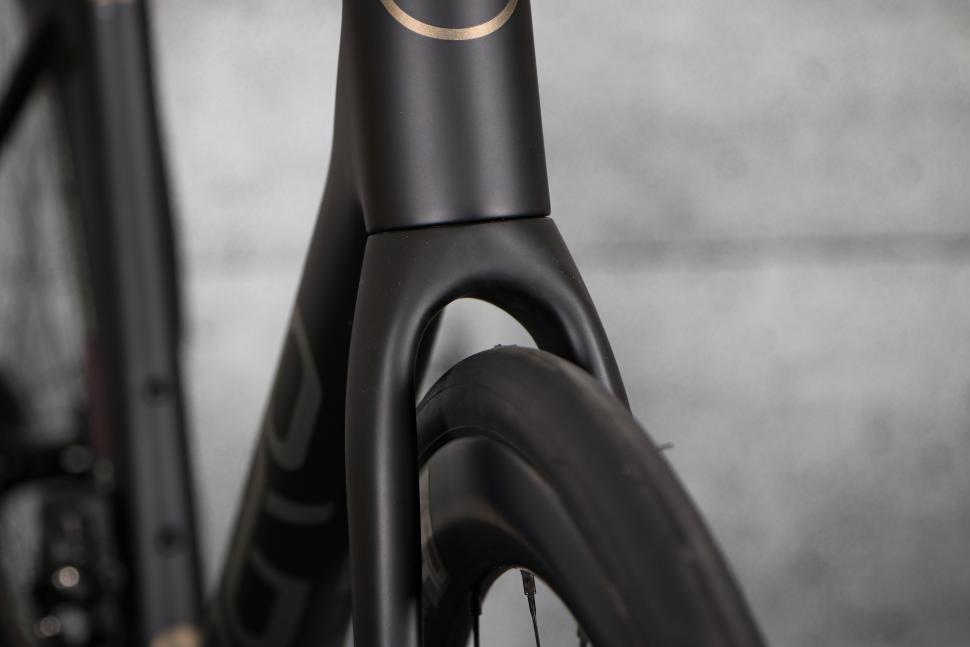
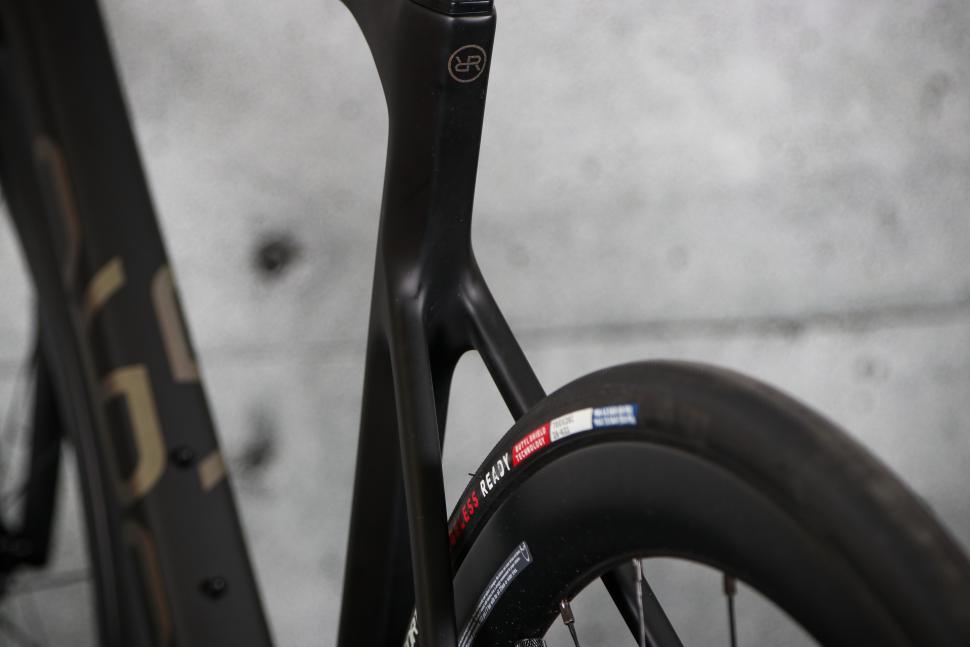
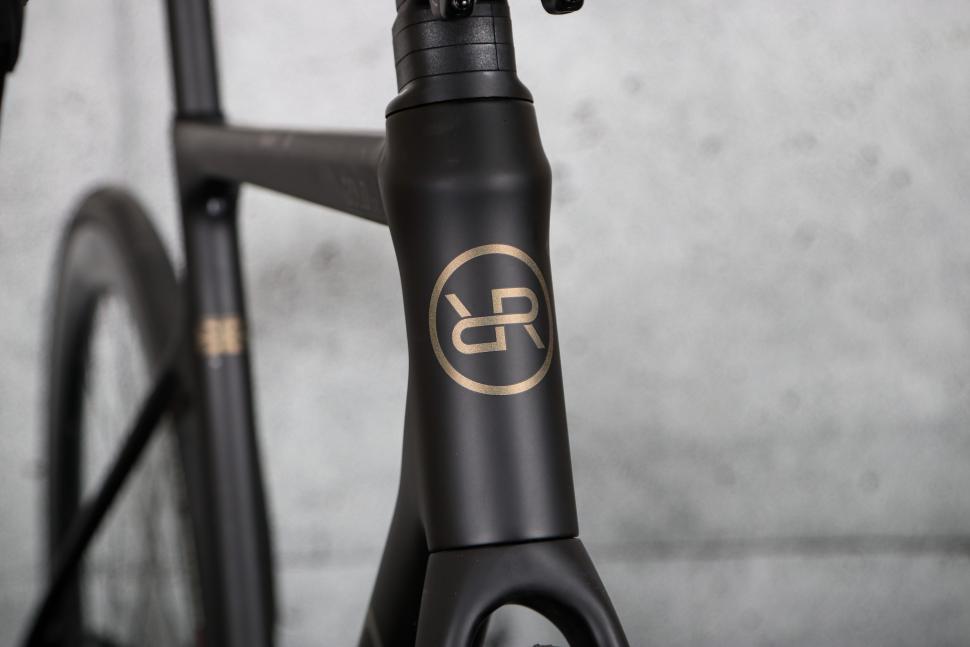

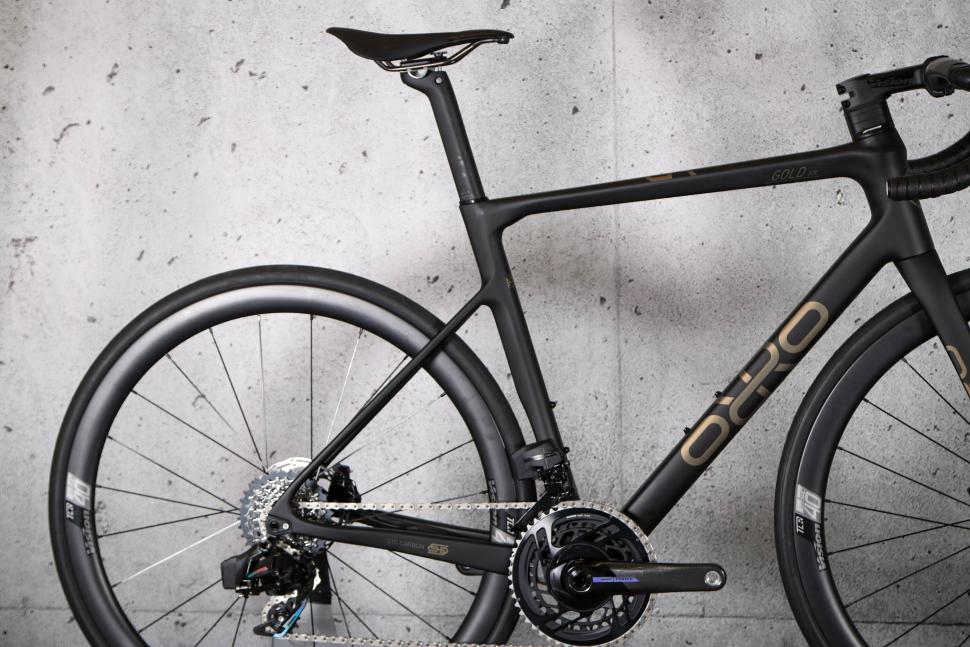

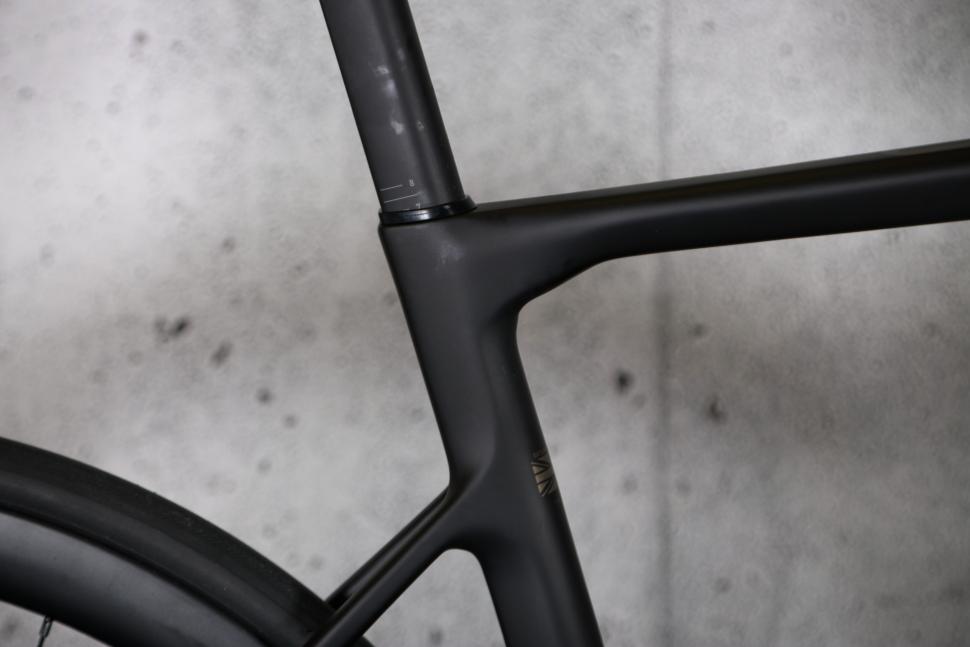


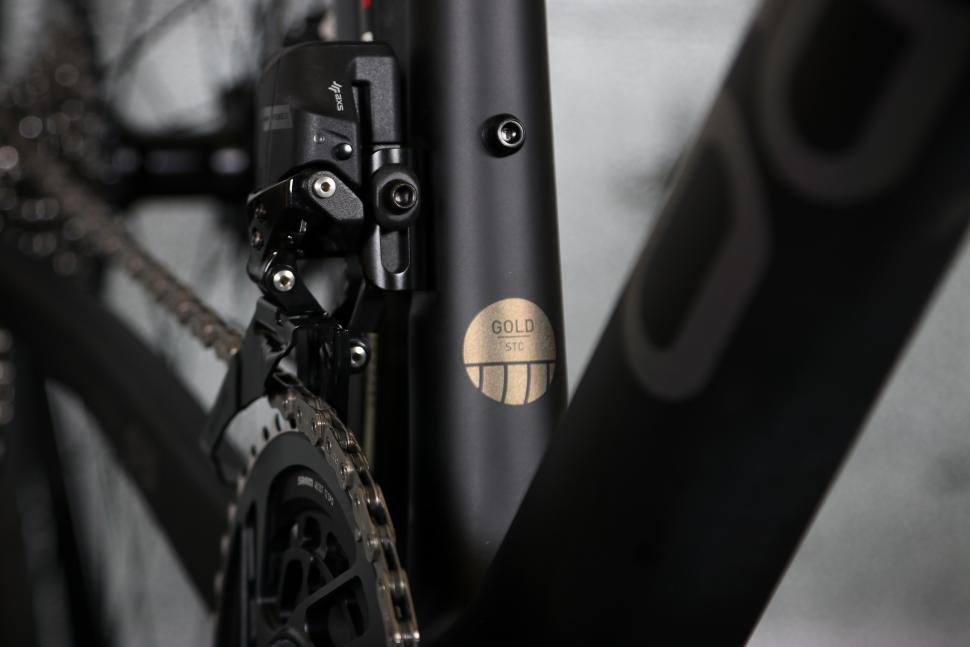

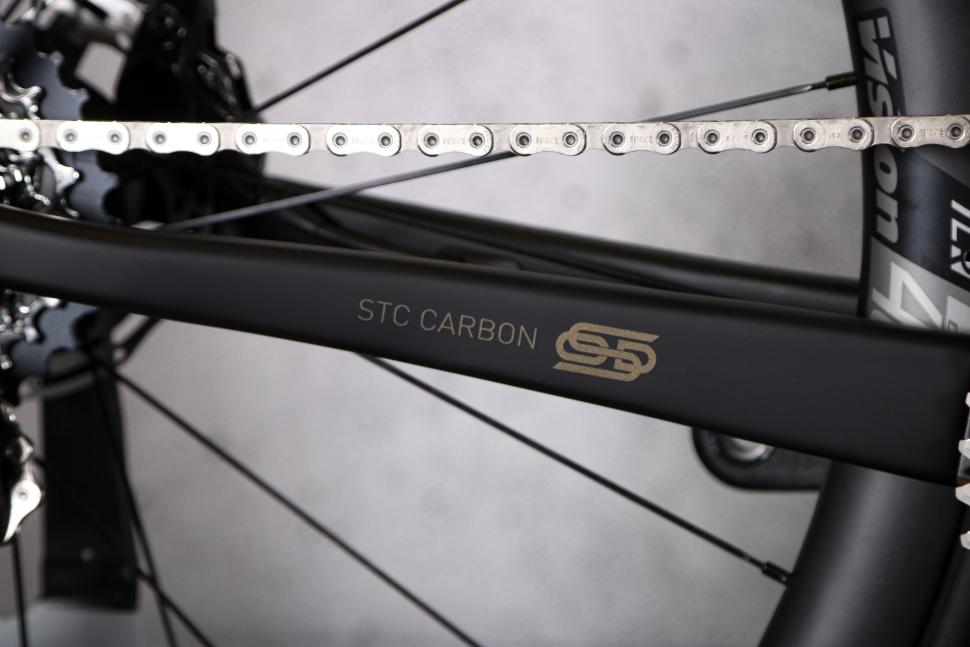
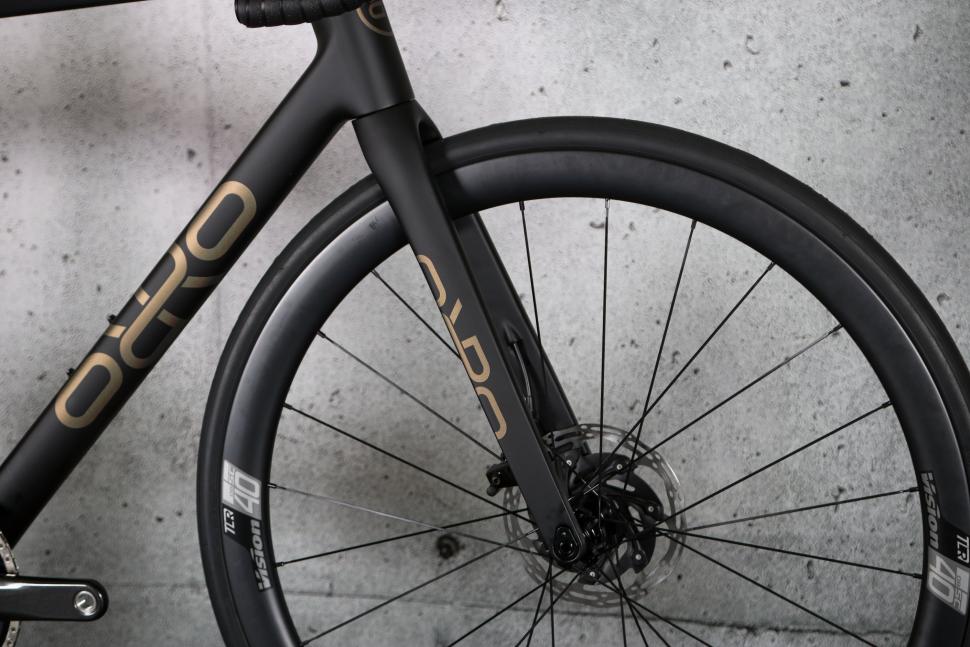



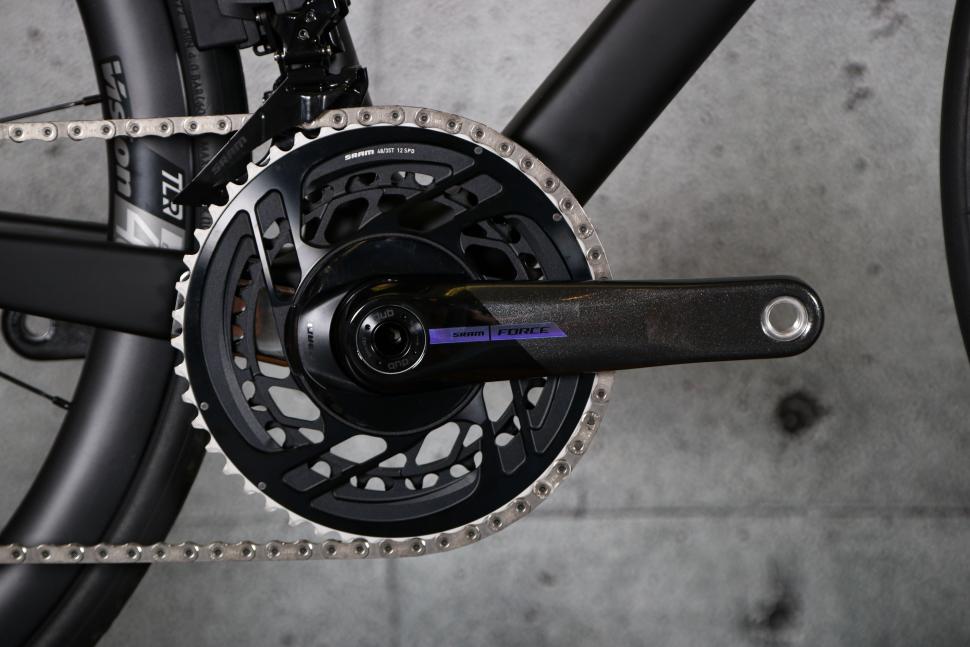
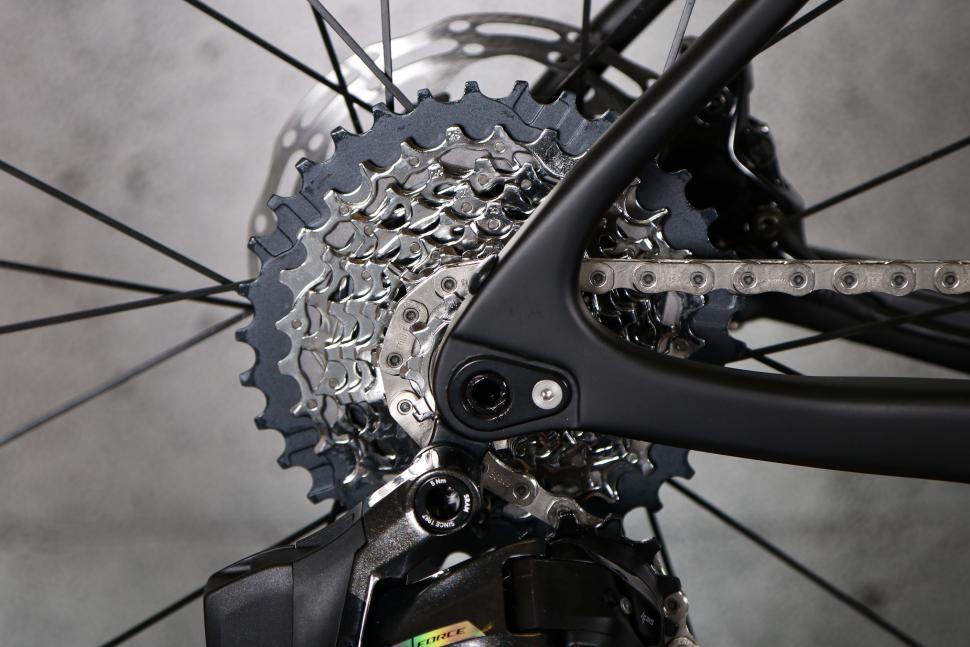
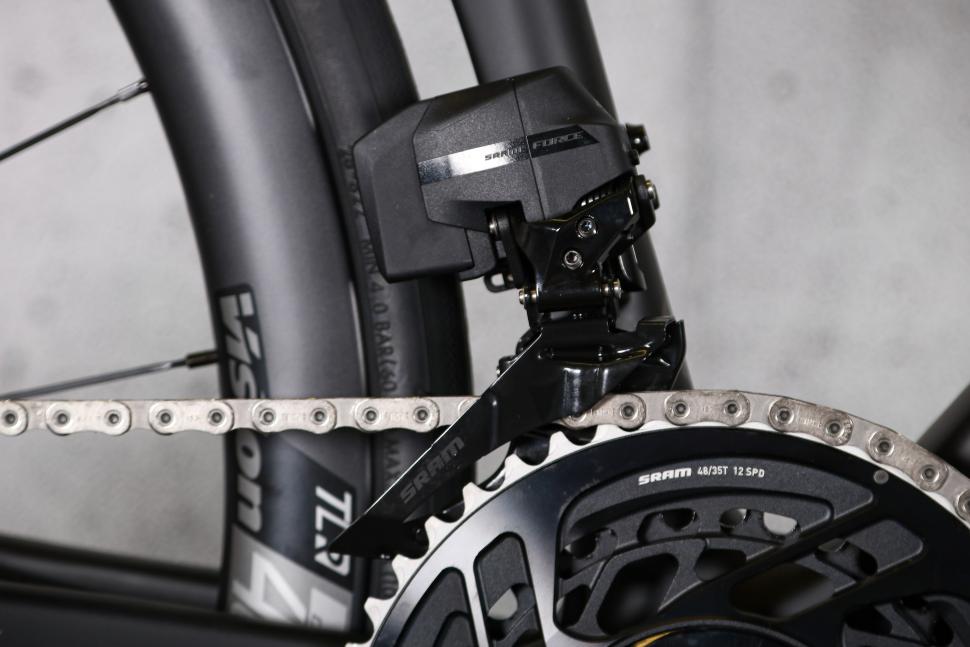
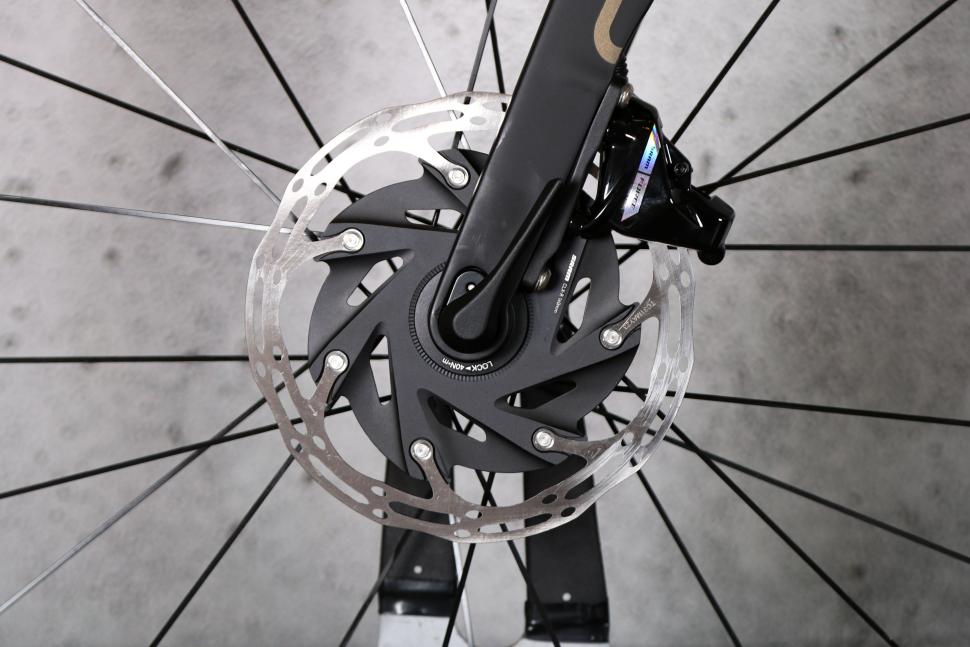
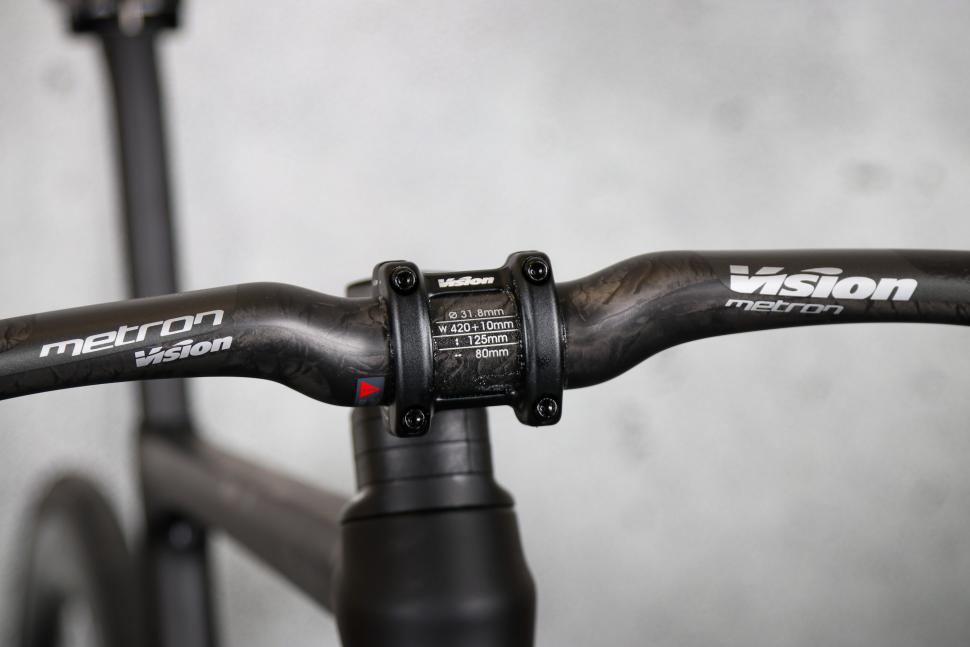
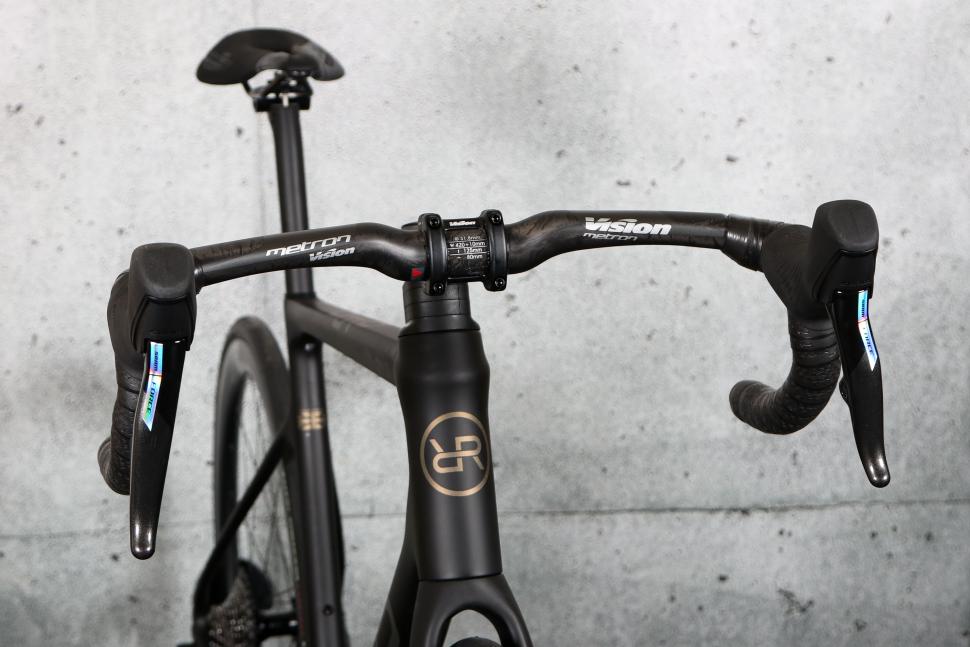
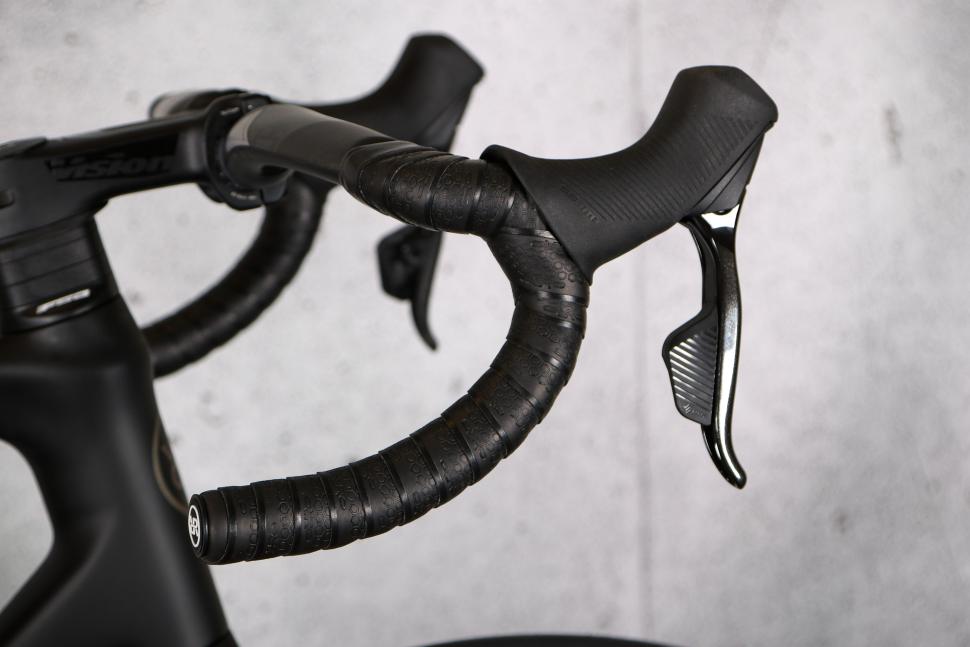


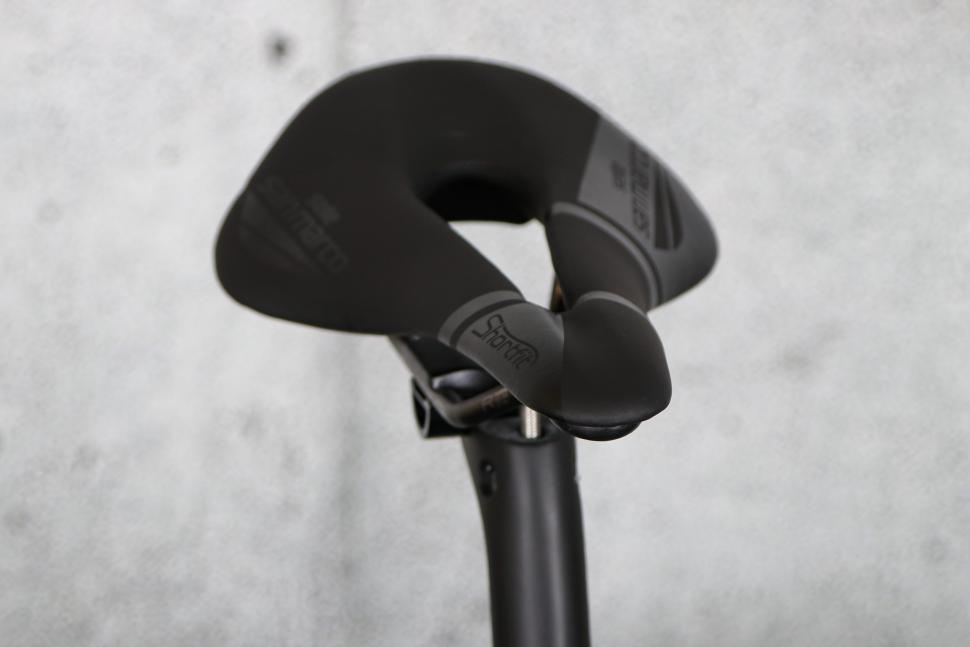





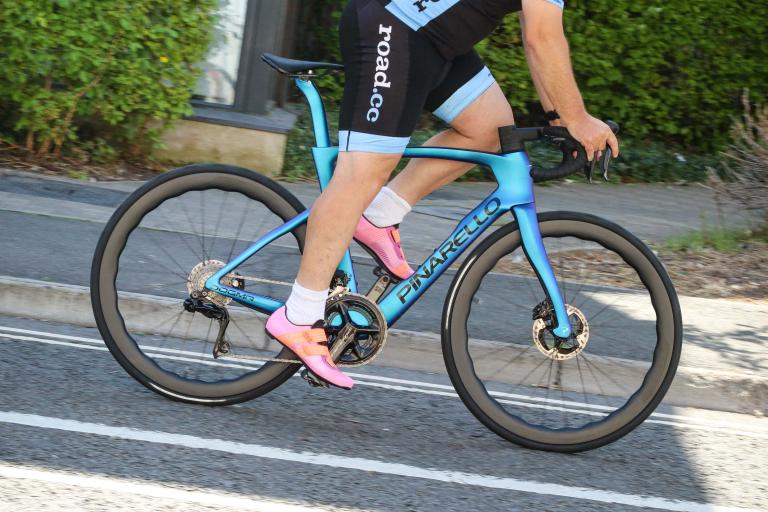
Add new comment
10 comments
Anyone thinking of buying - like me - should look at the forum/online reviews and have a good think about whether to do so. Many of those comments are somewhat at odds with this review - in particular in relation to "excellent build quality throughout and the matt black paint looks classy and is hardwearing". I probably won't buy now, even though it was on my short shortlist.
Looks like a more wallet friendly Supersix Evo (a good thing!)
A bit odd that they have put 52-36 chainrings - or the SRAM equivalent - on an eundurance bike. Other than that it looks good.
They haven't, it's 45/38
You need to read what is written before replying.
I did, "SRAM also specs its gear ratios slightly differently than Shimano, going with much smaller 45/38T chainrings than the 50/34 that is the smallest pairing on Shimano's road chainsets." That just says that SRAM has put smaller chain rings on, they are not "the SRAM equivalent of 52-36".
It's all academic anyway, SRAM don't even make a 48/38 2x, despite what the article says. It should be 48/35 which what the bike in the photos has.
I still don't think you've read it - the key word is equivalent. That should help you understand.
I'm not sure you understand the meaning of "equivalent". It means equal to. A 48x10 top gear (SRAM as offered with this bike) gives a gear ratio of 4.8, whereas the 52-11 (Ultegra Di2 as offered with this bike) gives a gear ratio of 4.7. Similarly the low gear of 36x30 (Ultegra) gives a ratio of 1.2 whereas a low gear of 35x33 (SRAM) gives a ratio of 1.1 (actually 1.06, so more than 10% difference). They're not equivalent, you see, because they're different. Hope that helps you understand.
As I say, it is the equivalent.